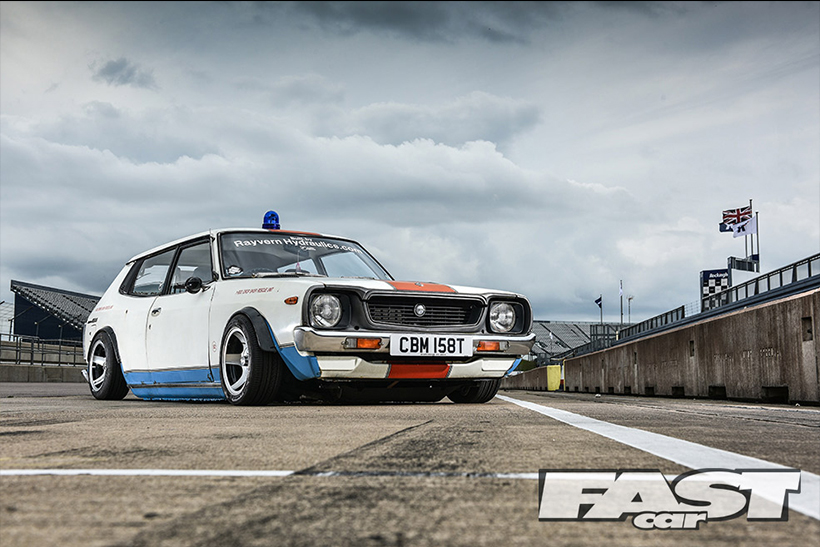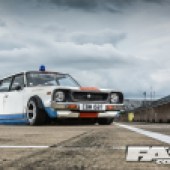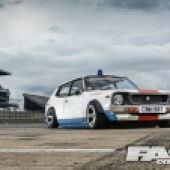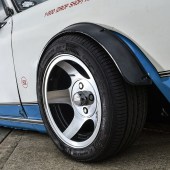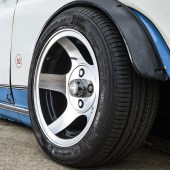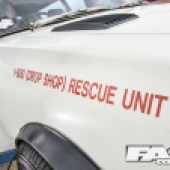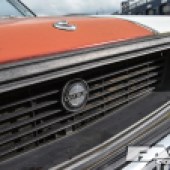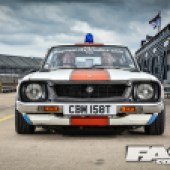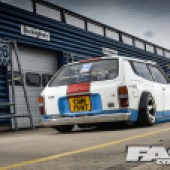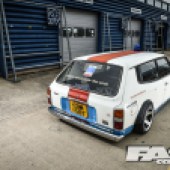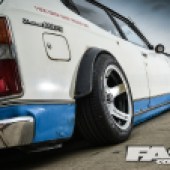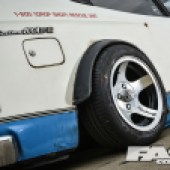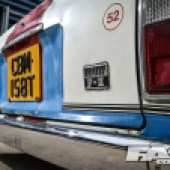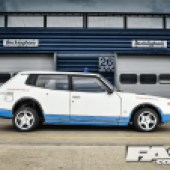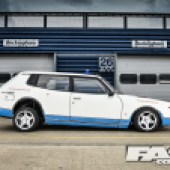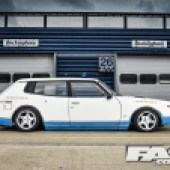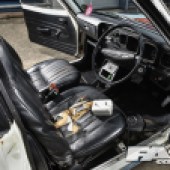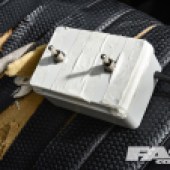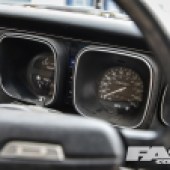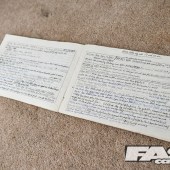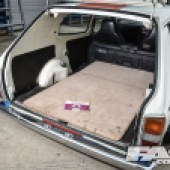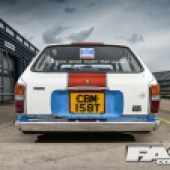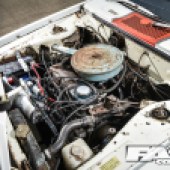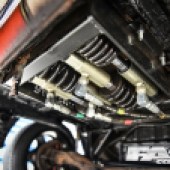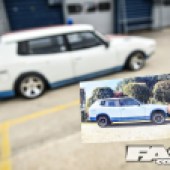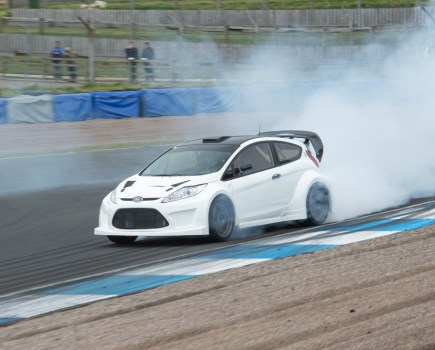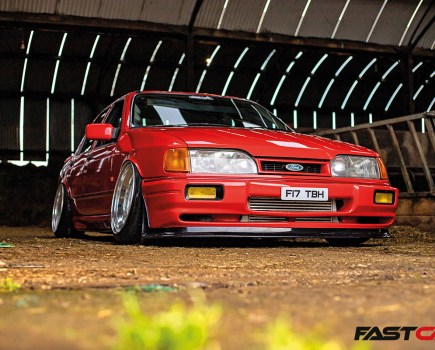An old skool ride built by an old skool car modifying legend – say hello to the Rayvern Hydraulics Datsun 100A F-11…
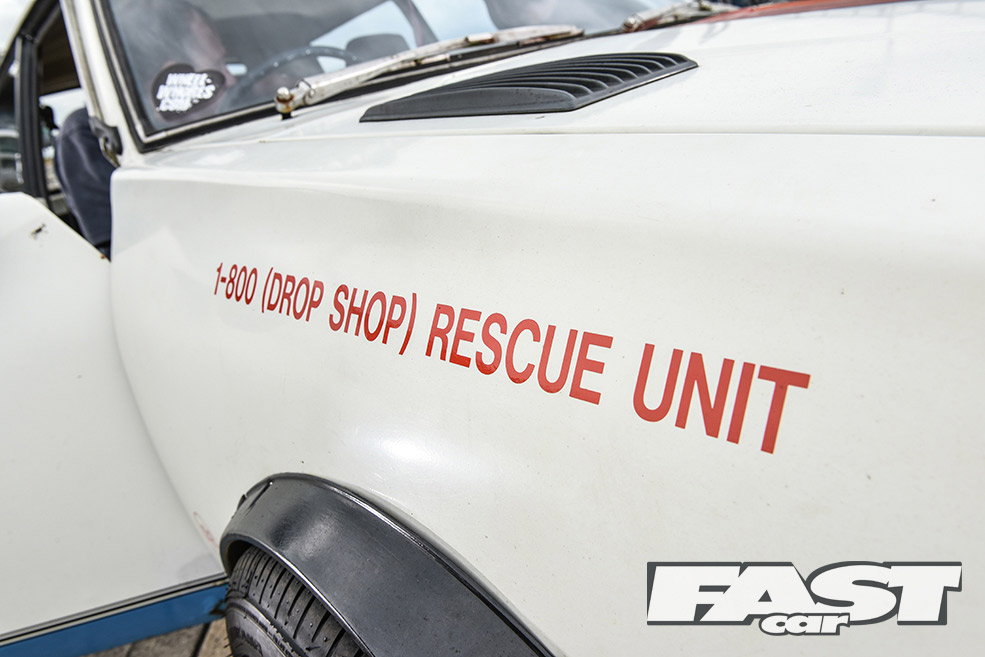
Be honest, how many of you know what the hell this is without checking the Tech Spec? Well done to those of you who do, you’re probably a balding old fart like me. If you’re a young gun and know what this is then props to you, have ten scene points for your trouble. For everyone else, this is a Datsun 100A F-II Estate. There aren’t many around, in fact there aren’t any around like this one. It’s a juiced-up throwback to ‘70s modifying with a modern twist.
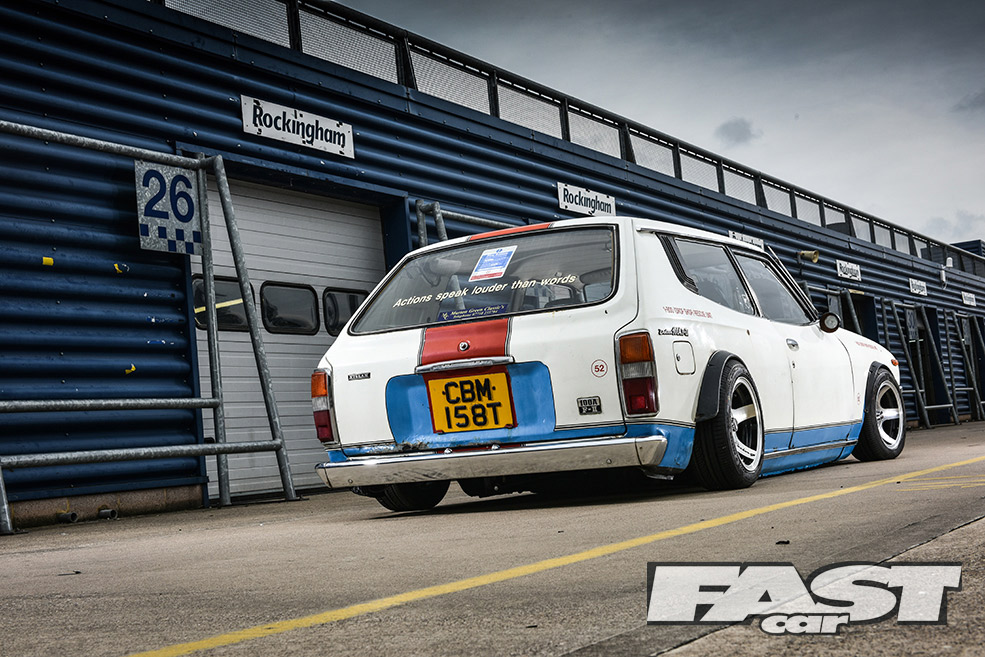
The man behind the build is Ray Vern. If you know anything about hydraulic suspension, or the modifying scene in general, you’ll have heard of him. Rayvern Hydraulics is the company name and making cars badass is the game. A specialist in both hydraulic and air suspension, Ray learned his trade building street rods in the States. In ’94 he set up his own company here in the UK, and thanks to his handiwork cars have been dancin’, droppin’ and snappin’ necks ever since.
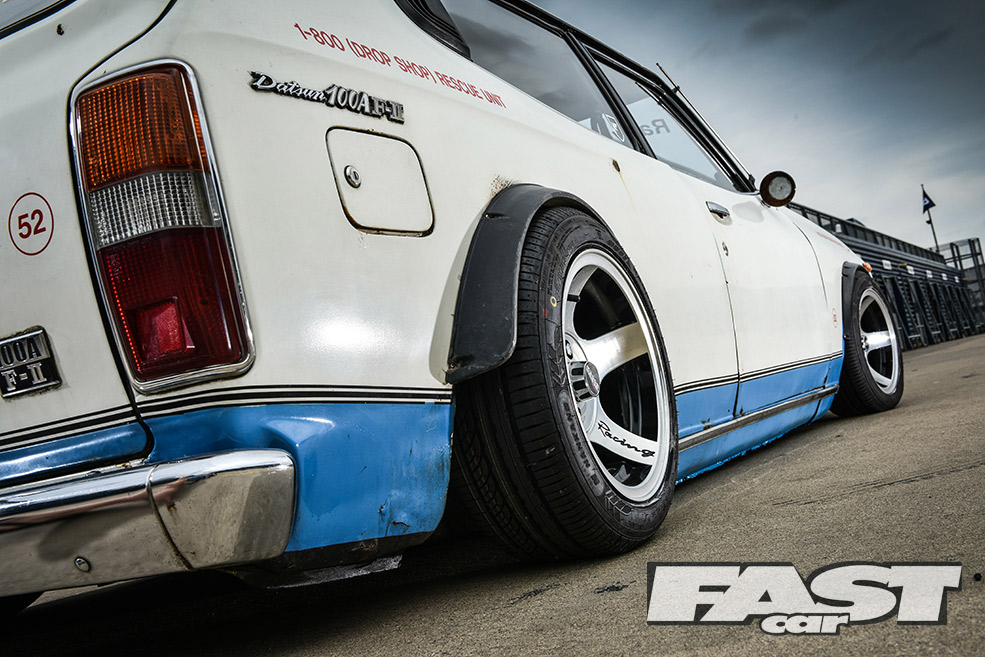
So as you’d expect, the guts of this retro ride are packed with a serious hydraulic suspension install. Hence the belly-scraping stance. Those are thirteen inch wheels by the way, thirteens! This old Datsun doesn’t just look low, when Ray flicks down on the white control box it is properly slammed. The sills are literally on the floor. The amount of work that’s gone into getting it this low however, is mind-boggling.
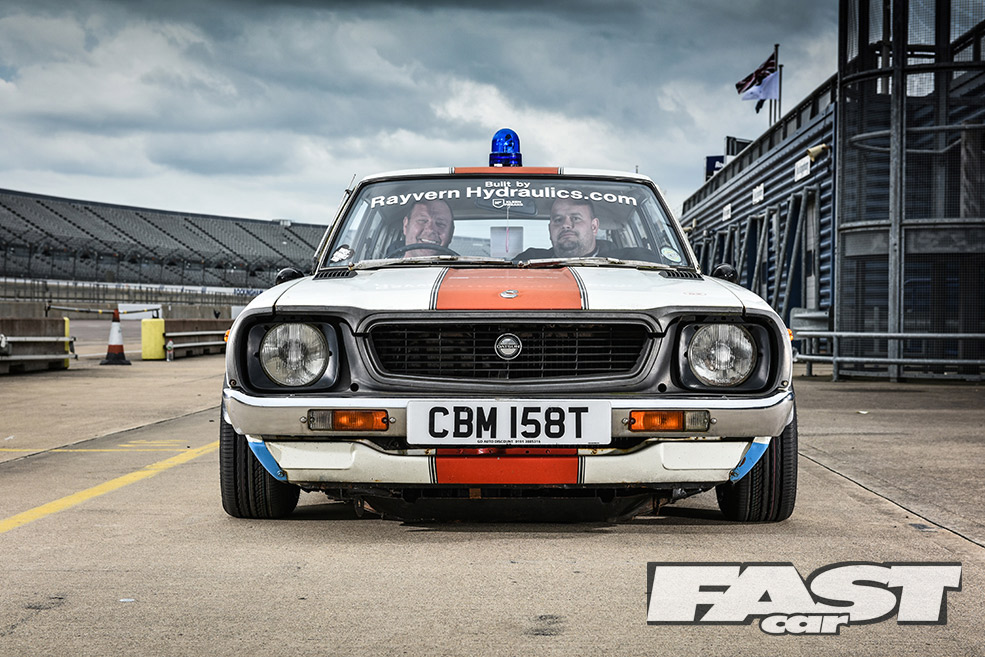
Firstly he’s had to move a load of stuff out of the way. The brake lines needed re-routing, the wheel arches have been cut about front and rear and the chassis had to be notched 3-inches. Then there’s the physical suspension changes needed; custom lower arms at the front, a four-link conversion at the back, custom top-mounts, etc. All of these mods take just a few words and a couple of seconds to describe, but days of work to accomplish. The effort and man-hours that have gone into this car is incredible. All so it can be raised up and dropped for fun but drive well on the road too.
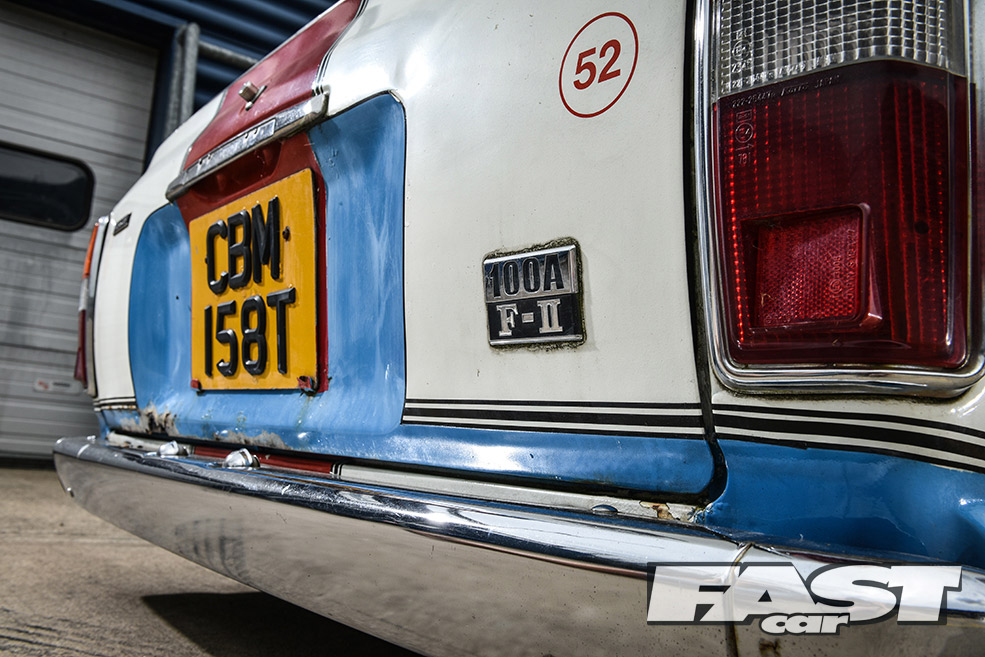
Ray has exaggerated the boxy lines of this late ‘70s wagon by sectioning 30mm out of the body. A technique from Ray’s Hot Rod roots, it’s used as an alternative to a roof chop that gives a similar result; the car looks shorter, lower and sleeker. Ray cut a 30mm horizontal strip out of the body just below the window line, all the way around the car, then welded the top half of the car back onto the lower half. It’s definitely effective. It’s also a hell of a lot of work.
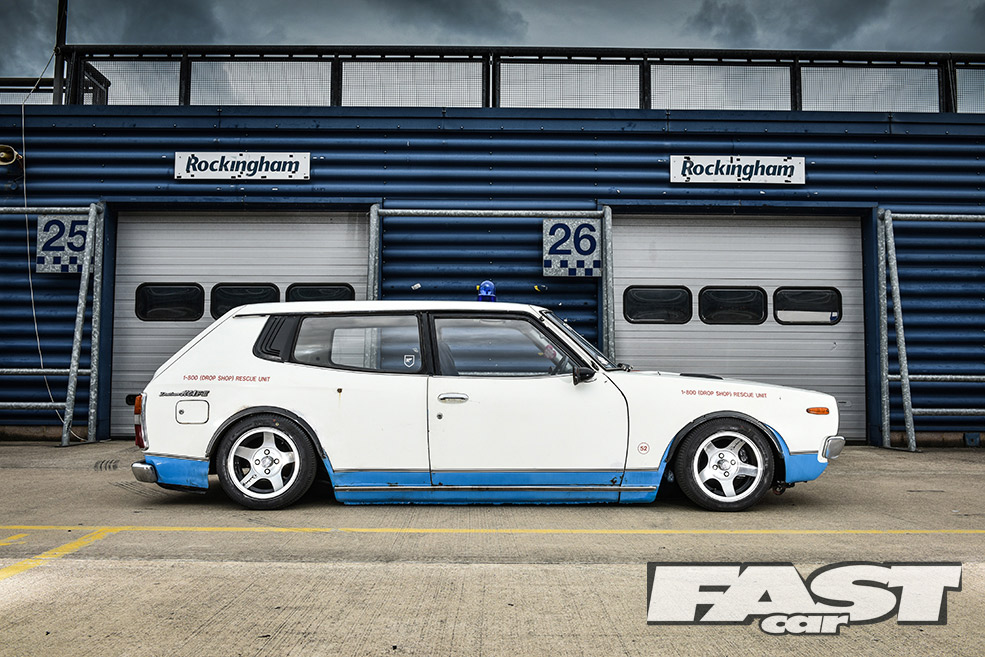
The wheel arches have had similar attention. Ray has tubbed the rear arches, cutting out the original metal and welding in his own inner arches, and it’s a similar story up front. The wheels look like they’re straight out of the ‘70s too, with dished spokes, polished faces and painted innards. However, they’re actually modern wheels made by CARRE and brought into the UK by Wolfrace.
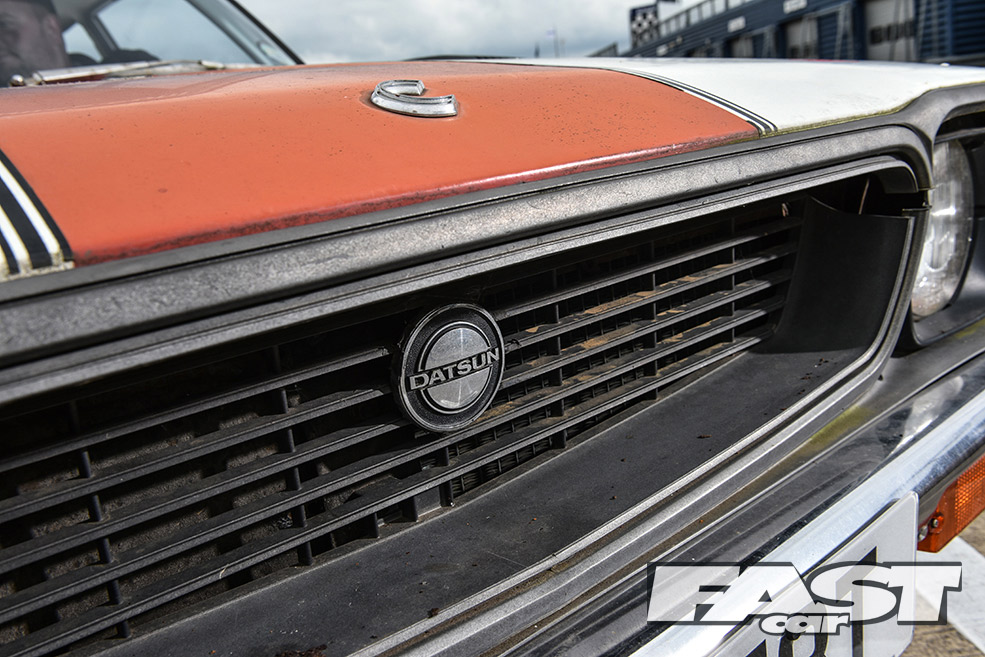
The rims are just 6.5x13s and wrapped in Nankang 175/50×13 tyres. They sit way out from the standard bodywork, and is another part of the Hot Rod ‘low and wide’ look. Ray needed to cover the exposed tops of the tyres to keep the car road-legal, so he grabbed some bolt-on arch extensions or “fender flares” as everyone seems to be calling them these days like our chums in the USA, and used a blade to convince them they would fit the Datsun instead. Actually, “flares” is probably the right way to describe them, considering the car is from 1978.
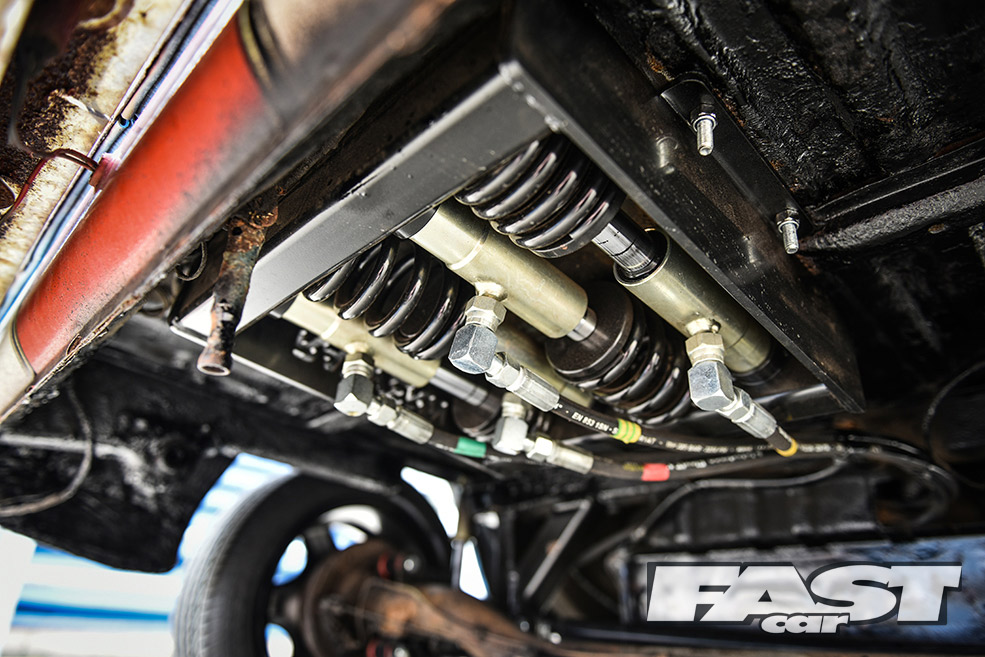
Ray has cut the flares back to give the tyres that little bit of poke too. No-one wants to see skinny, high-offset wheel hiding several inches inside arch extensions. That kind of thing should result in a permanent modifying ban. It’s like bad breath, if you’ve got a mate who is suffering from this terrible condition then save them from the embarrassment and text them the truth. Right now. Go on.
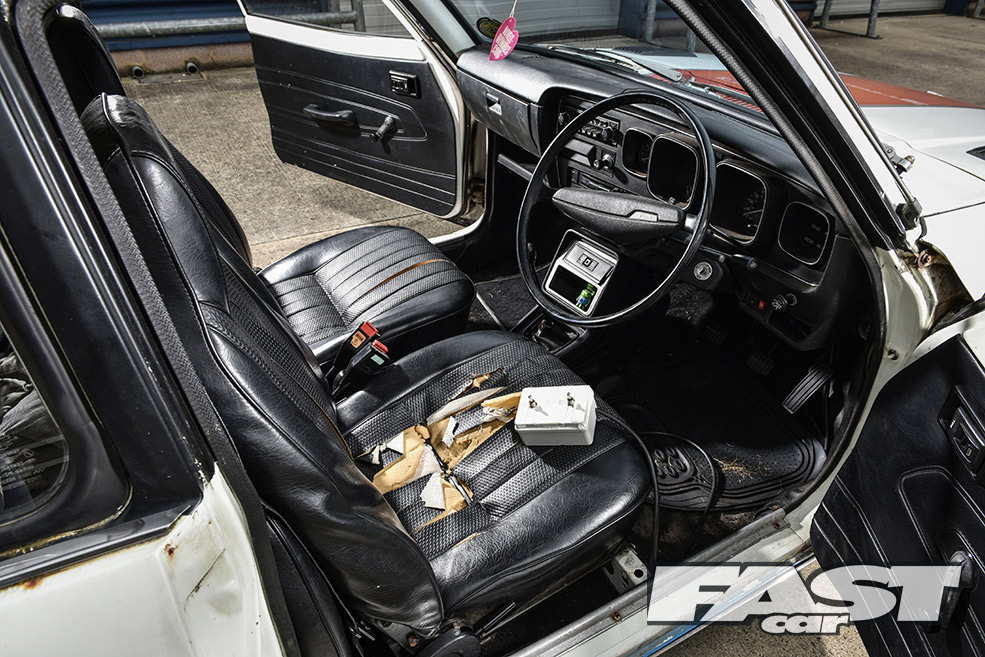
Helping people is a bit of a theme with this car. It’s a “Drop Shop Rescue Unit”, showing people with cars jacked up like 4x4s the error of their ways. Ray has topped the roof off with a blue flashing light too, so you can be sure this is now an official emergency service vehicle in the eyes of the law. That’s probably almost certainly true.
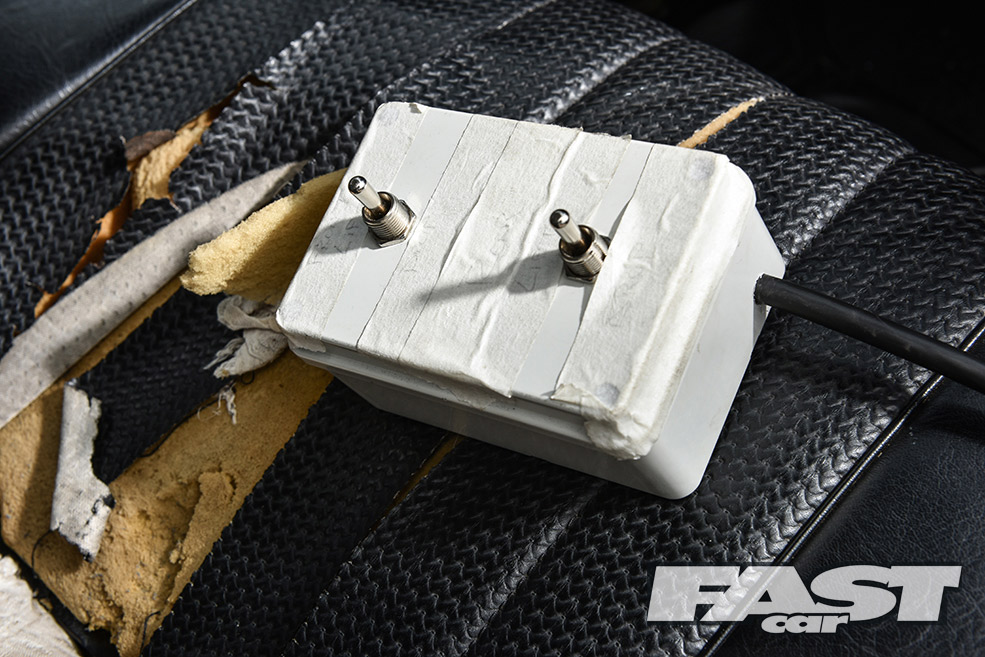
In all seriousness, we wonder how many people have seen Ray’s Datsun in action and become enlightened about the low lifestyle? It’s probably the slowest car we’ve ever featured in FC, definitely one of the oldest and bizarrely one of the coolest. We love the patina. Ray could have resprayed it in a posh colour, especially with his Hot Rod background. Luckily, he’s left it alone. There’s something authentic about the minor dents and rust spots on this car, the battle-scars of its life, that you just don’t get by pouring paint stripper, beer and salt on the bonnet of a 2016 VW Up!
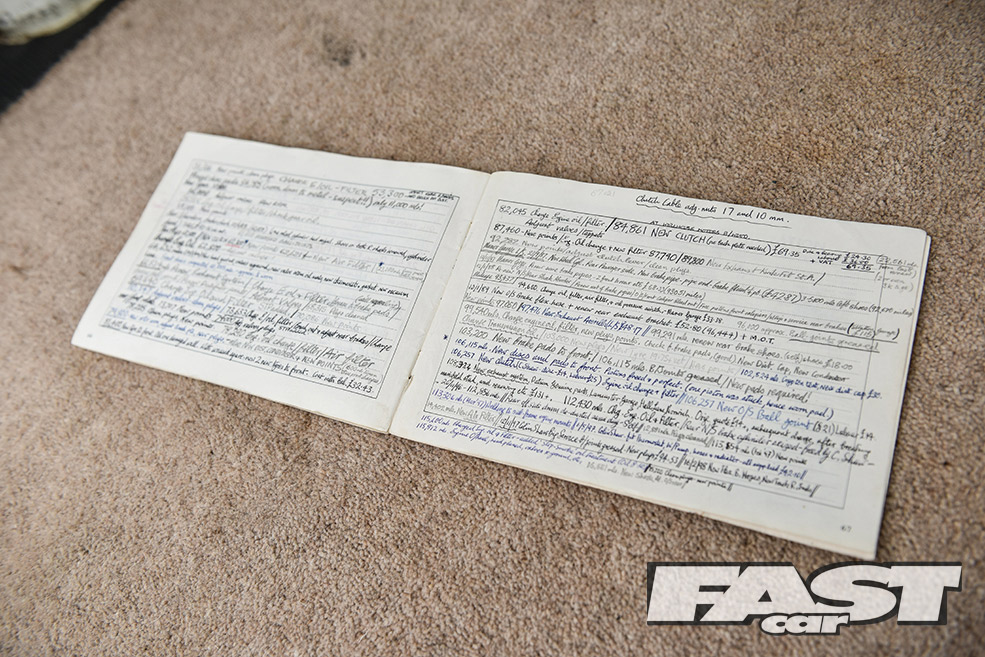
In fact, the hours of work that’s gone into this car must really upset the purists. Ray has an old service book for the car and it’s packed with completed maintenance jobs. This was an extremely well looked after car. In today’s market where classic car prices are going through the roof, it was probably worth a lot of money. Did Ray want to keep it original in the hope of cashing in? Of course not. He wanted to make it dance, scrape its belly and turn heads. That’s what makes Ray a legend of low!
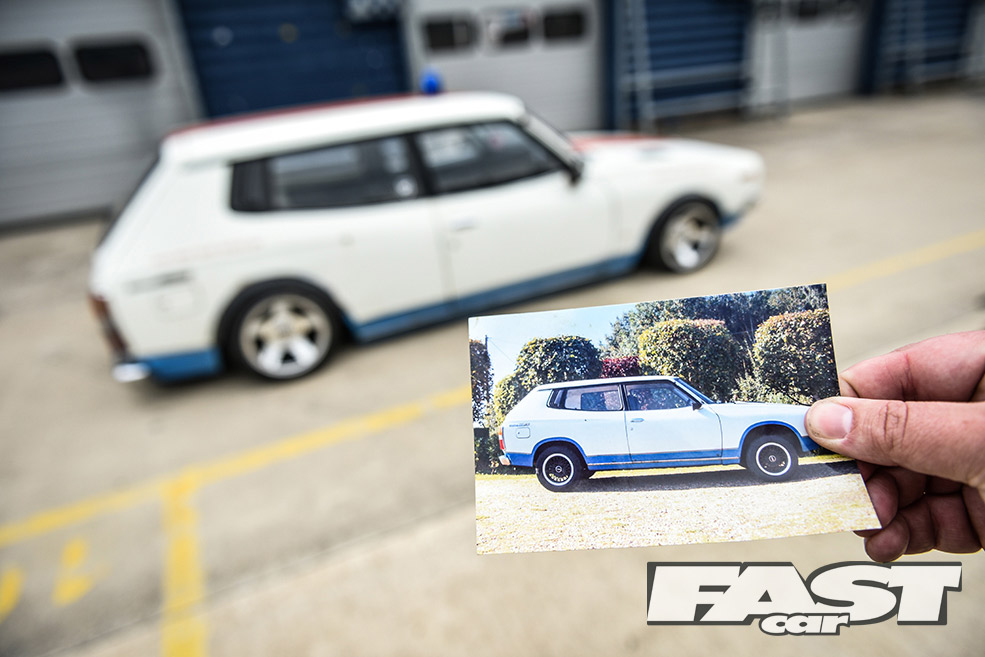
OWNER: RAYVERN HYDRAULICS
TECH SPEC: DATSUN 100A F11
STYLING:
Bodyshell sectioned 30mm; modified bolt-on arch extensions designed for a Mazda MX-5; front arches cut out and new inner arches fabricated; rear arches tubbed 5in; red stripe and blue lower-body colour scheme; repositioned fuel filler neck.
TUNING:
988cc OHV engine; relocated battery in custom tray; (probably a million horsepower).
CHASSIS:
CARRE Astro 6.5x13in wheels; Nankang AS-1 175/50×13 tyres; Rayvern Hydraulics suspension system; raised front subframe; custom lower suspension arms; custom-machined spherical bearing top-mounts; raised and extended steering rack; rose-jointed track rod ends; sectioned hub assembly; 3in chassis notch; 4-bar rear suspension conversion; spring box frame mounted under boot floor; hydraulic pump and valve assembly mounted in engine bay; re-routed brake lines.
INTERIOR:
OEM interior complete with torn driver’s seat caused by toxic farts.
Words Dan Goodyer Photos Chris Wallbank

